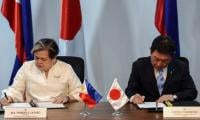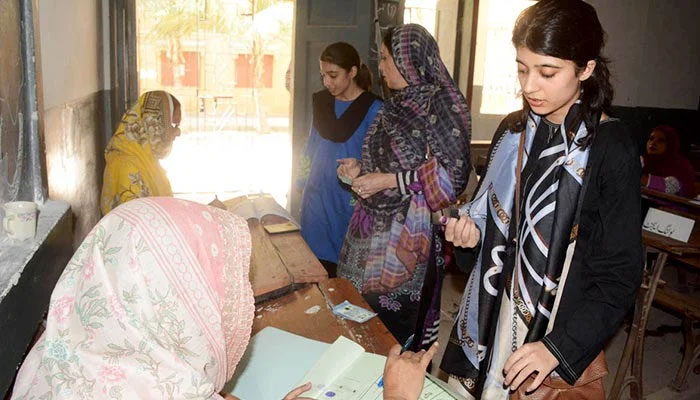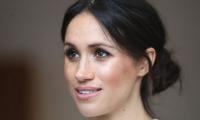Chakwal stands out with lowest gender voter difference, Chaman highest
ECP data shows that in Chaman 118,898 males form 65pc and 64,620 females form only 35pc of the total 183,518 voters
ISLAMABAD: As the total number of registered male voters stands at 67,893,875 (54pc) and female voters at 57,732,575 (46pc), there is only one district in the country which has the lowest gender difference of 602,584 (51pc) male voters and females registered at 583,616 (49pc).
The very district Chakwal edges out all the districts behind in terms of the barest minimum male-female voters’ difference, and the overall number of voters in this politically important district in Punjab is 1,186,200.
However, it is to be seen whether or not this close parity or equation will be reflected on the day of elections. And, of course, a lot will depend on the contesting political parties and their candidates, as to how effectively they can motivate voters to come out and exercise their voting right.
According to the latest electoral rolls data issued by the Election Commission of Pakistan on March 28, 2023, the Chaman district of Balochistan, bordering Afghanistan, has the most significant difference between male and female registered voters. Here, 118,898 males form 65pc and 64,620 females form only 35pc of the total 183,518 voters in this district.
Chaman is followed by district Qila Abdullah, where the male-female difference stands at 99,482 (63pc) and 57,693 (37pc). A careful look at the nationwide database of registered voters shows that there are only six districts in the country where the gender difference is 52pc-48pc, which are: Usta Muhammad in Balochistan, Kohistan Lower in Khyber Pakhtunkhwa, Attock, Jehlum, Khushab and Rawalpindi in Punjab.
Interestingly, while Kohistan Lower has 39,827 (52pc) male voters and 36,087 (48pc) female voters, the other district Kohistan Upper is close to it in terms of minimum male-female voters’ difference, as it has 39,481 (53pc) male and 34,701 (47pc) females.
In Punjab, Rawalpindi is one of the most populated districts with 1,819,825 (52pc) male voters and 1,700,229 (48pc) voters and its total population of registered voters stands at 3,520,054. Khushab is housed by 480,522 (52pc) males and 443,848 (48pc) females.
Similarly, Jehlum also has a gender difference of 533,700 (52pc) male and 501,144 (48pc) female registered voters.
-
 Reese Witherspoon Issues Urgent Warning After Scammers Using Her Identity
Reese Witherspoon Issues Urgent Warning After Scammers Using Her Identity -
 XAI Restricts Grok Image Editing After Backlash From California And Europe
XAI Restricts Grok Image Editing After Backlash From California And Europe -
 ‘Disgraced’ Andrew’s Past Scandals Catch Up To His Daughters
‘Disgraced’ Andrew’s Past Scandals Catch Up To His Daughters -
 Amazon Rolls Out ‘sovereign’ EU-based Cloud To Address Data Privacy Concerns
Amazon Rolls Out ‘sovereign’ EU-based Cloud To Address Data Privacy Concerns -
 Ross, Matt Duffer Used AI To Write Finale Of 'Stranger Things'?
Ross, Matt Duffer Used AI To Write Finale Of 'Stranger Things'? -
 Microsoft Secures Largest Ever Soil Carbon Credit Agreement Amid Data Centres Expansion
Microsoft Secures Largest Ever Soil Carbon Credit Agreement Amid Data Centres Expansion -
 Google Expands Gemini With Personal Intelligence
Google Expands Gemini With Personal Intelligence -
 Japan, Philippines Sign Defence Pacts As Regional Tensions Escalate
Japan, Philippines Sign Defence Pacts As Regional Tensions Escalate -
 ISS Crew Of Four Completes Medical Evacuation With Safe Splashdown Off California
ISS Crew Of Four Completes Medical Evacuation With Safe Splashdown Off California -
 Connor Storrie Reveals Why His Dad Hasn't Seen 'Heated Rivalry' Yet
Connor Storrie Reveals Why His Dad Hasn't Seen 'Heated Rivalry' Yet -
 Meghan Markle’s Biggest Challenge In UK Return As She Struggles To Control Narrative
Meghan Markle’s Biggest Challenge In UK Return As She Struggles To Control Narrative -
 Princess Beatrice, Eugenie Angry As King Charles Ends Their Financial Security
Princess Beatrice, Eugenie Angry As King Charles Ends Their Financial Security -
 Chase Infiniti Shares Her Working Experience With Leonardo DiCaprio
Chase Infiniti Shares Her Working Experience With Leonardo DiCaprio -
 Todd Bridges And Wife Bettijo B. Hirschi Separate After Three Years Of Marriage
Todd Bridges And Wife Bettijo B. Hirschi Separate After Three Years Of Marriage -
 Germany Sends Troops To Greenland Amid Rising Arctic Tensions
Germany Sends Troops To Greenland Amid Rising Arctic Tensions -
 Jonathan Quick, The New York Rangers Face Mounting Pressure As Losses Pile Up
Jonathan Quick, The New York Rangers Face Mounting Pressure As Losses Pile Up




